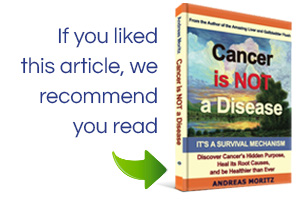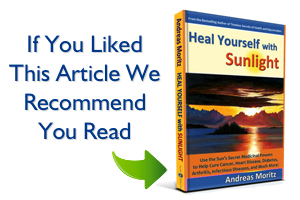By: Dr. Mercola
Source: Mercola.com
UV light from the sun and tanning beds is the main vitamin D source for humans, and researchers have identified an astonishing number of health benefits of vitamin D in the past decade.
But since UV exposure has been suspected of causing skin cancer, many conventional health authorities still warn against it.
A recent review of studies sought to review the health effects of solar radiation, tanning beds and vitamin D.
The researchers looked at data from different time periods for populations at different latitudes, with the aim at looking at the relative risk for cutaneous malignant melanoma associated with tanning bed use, vitamin D and UV effects.
They found that increased tanning bed use was NOT associated with melanoma.
According to the authors:
“Due to the fear of skin cancer, health authorities warn against sun and sunbed exposure.
This policy, as well as the recommended vitamin D doses, may need revision.”
And:
“… The overall health benefit of an improved vitamin D status may be more important than the possibly increased In fact, Ivan Oransky, the editor of Reuters Health, has previously noted that the real risk of getting skin cancer from a tanning bed is less than three-tenths of one percent—and even then, this is likely only from those who habitually overexpose themselves. The authors of the featured review state that while sun exposure is commonly assumed to be the main cause of cutaneous malignant melanoma (CMM hereafter referred to simply as melanoma, the most lethal form of skin cancer—the matter is actually NOT “settled.” The theory is still under dispute, and in their analysis, they reviewed the arguments for and against causation. With a hint of irony, the authors state that “several factors are probably involved, as exemplified by a relationship sometimes found between gross domestic product and melanoma incidence.” They also list a number of associations between sun exposure and melanoma found in the medical literature, such as: So what about tanning beds—are they more dangerous than regular sun exposure? As you may recall, the Senate’s health-care overhaul bill now includes a 10 percent tax on tanning services to dissuade you from engaging in such “health-harming” activities; a move that is unquestionably short sighted and counterproductive considering the fact that vitamin D deficiency is rampant in the U.S. Where tanning beds are concerned, the science is more conflicted, with some studies finding no detrimental impact from tanning beds on skin cancer rates while others have found that rates of skin cancer are higher in those using tanning beds than those who do not tan. The reason for these conflicting findings, the authors speculate, could very well be due to differences in UVA/UVB ratios and intensities between different types of tanning beds. I believe they’re likely correct in their speculation that the type of tanning bed may be a major factor in whether or not it will have a beneficial or detrimental impact on your cancer risk. Safe tanning beds have less of the dangerous UVA than sunlight, while unsafe ones emit more UVA than sunlight, and it is the UVA rays, which penetrate your skin more deeply than UVB, that appear to be a much more important factor in causing photoaging, wrinkles and skin cancers. Another important factor when selecting a tanning bed is the type of ballast it employs, to avoid excessive electromagnetic field (EMF) exposure. Most tanning units use magnetic ballasts to generate light. These magnetic ballasts are well known sources of EMF fields that can contribute to cancer. If you hear a loud buzzing noise while in a tanning bed, it has a magnetic ballast system. I strongly recommend you avoid magnetic ballast beds, and restrict your use of tanning beds to those that use electronic ballasts. High-quality indoor tanning devices are safe if you precisely follow the simple guideline of never getting burned. Your skin should only get the lightest shade of pink after using them. The FDA has very strict guidelines that seem overly restrictive and will likely impair most people from getting enough vitamin D. The FDA also recommends waiting 24-48 hours between doses. The reason for this is that it takes at least 24 hours for the erythema to go away. This exposure schedule can be described as CONTROLLED SUNSHINE, making it a very safe way to receive the benefits of the sun while indoors. Ideally you should do this also when you are initially exposed to sunshine. But once you have a tan you can easily and safely increase exposure to once a day. Even when looking at the research showing an increased risk for skin cancer from sun exposure, just how great is that risk? Ivan Oransky, M.D., editor of Reuters Health wrote an excellent commentary on this last year. Each year, during the month of May, as the sun slowly begins to thaw away those winter blues, you start getting bombarded with Skin Cancer Awareness ads; all of which pitch the idea that the sun is your enemy. Many will include the statistic issued by the World Health Organization, which states that “use of sunbeds before the age of 35 is associated with a 75 percent increase in the risk of melanoma.” Sounds horrific, but how real is this threat? “[W]hat does that really mean? Is it 75 percent greater than an already-high risk, or a tiny one?” Oransky writes. “If you read the FDA’s “Indoor Tanning: The Risks of Ultraviolet Rays,” or a number of other documents from the WHO and skin cancer foundations, you won’t find your actual risk. That led AHCJ member Hiran Ratnayake to look into the issue in March for The (Wilmington, Del.) News Journal, after Delaware passed laws limiting teens’ access to tanning salons. The 75 percent figure is based on a review of a number of studies, Ratnayake learned. The strongest such study was one that followed more than 100,000 women over eight years. But as Ratnayake noted, that study “found that less than three-tenths of 1 percent who tanned frequently developed melanoma while less than two-tenths of 1 percent who didn’t tan developed melanoma.” That’s actually about a 55 percent increase, but when the study was pooled with others, the average was a 75 percent increase. In other words, even if the risk of melanoma was 75 percent greater than two-tenths of one percent, rather than 55 percent greater, it would still be far below one percent.” [Emphasis mine.]
So, while statistically true, it’s really misleading, and incites undue fear. By only presenting the relative risk increase (the 75 percent increase) they make the risk sound rather unreasonable. Meanwhile, your absolute risk of developing skin cancer from sun exposure is still, AT WORST, below one percent! And please remember, these highly distorted scare tactics fail to mention the BENEFITS of the exposure, which radically reduce the dangers of the far more common, breast, prostate and colon cancers that are reduced. Oransky explains the importance of understanding the difference between relative risk and absolute risk in his article: “Absolute risk just tells you the chance of something happening, while relative risk tells you how that risk compares to another risk, as a ratio. If a risk doubles, for example, that’s a relative risk of 2, or 200 percent. If it halves, it’s 0.5, or 50 percent. Generally, when you’re dealing with small absolute risks, as we are with melanoma, the relative risk differences will seem much greater than the absolute risk differences. You can see how if someone is lobbying to ban something – or, in the case of a new drug, trying to show a dramatic effect – they would probably want to use the relative risk. … So when you read a study that says something doubles the risk of some terrible disease, ask: Doubles from what to what?” Another important factor to keep in mind is that vitamin D, ideally from sun exposure, may decrease your risk of many other cancers and chronic diseases. According to the featured review: “… it can be estimated that increased sun exposure to the Norwegian population might at worst result in 200-300 more melanoma deaths per year, but it would elevate the vitamin D status by about 25 nmol/l and might result in 4,000 fewer internal cancers and about 3,000 fewer cancer deaths overall. The lack of sunlight exposure leads to more health problems than bone disease and increased risk of cancer. Other benefits include protection against infectious diseases and non-cancerous diseases (diabetes, CVD, multiple sclerosis, and mental disorders).” Overall, I believe the less than one percent risk of developing skin cancer from sun exposure or a safe tanning bed is well worth it, as increased vitamin D levels will protect you against so many other debilitating and lethal diseases and cancers… There’s also compelling research showing that sun exposure will indeed protect you against melanoma—the most dangerous form of skin cancer. In my view, a safe tanning bed comes in as a close second after natural sun exposure as the ideal way to optimize your vitamin D levels (as opposed to getting it from fortified food items or supplements). In a recent interview, Dr. Stephanie Seneff explained how vitamin D—specifically from sun exposure—is intricately tied to healthy cholesterol and sulfur levels, making the recommendation to get your vitamin D from the sun all the more important. To review the details, please listen to the interview below. < To view the original article click here.Sun Exposure and Skin Cancer
What Makes a Tanning Bed Safe?
IF Sun Exposure Increases Your Risk of Cancer, Just How Great is that Risk?
Understanding the Difference between Relative Risk and Absolute Risk
Tanning Beds Decrease Ten Times More Cancers than they Cause
Sun Exposure is the BEST Way to Optimize Your Vitamin D Levels
To reprint this article, visit the source website for reprinting guidelines







